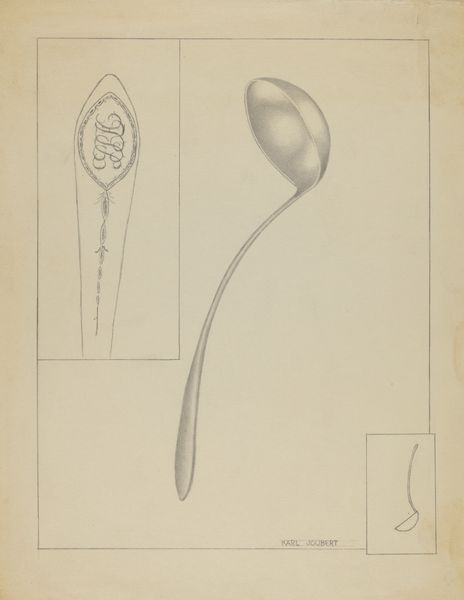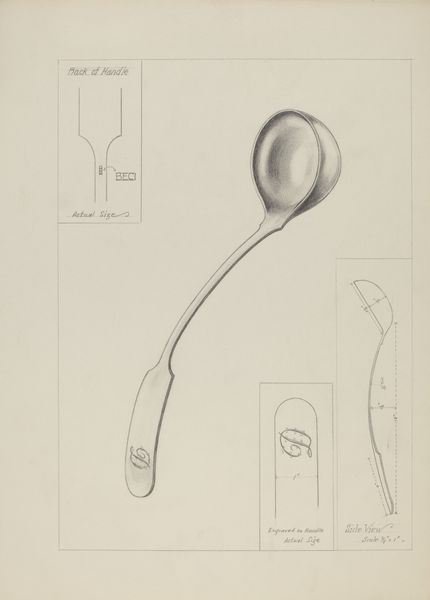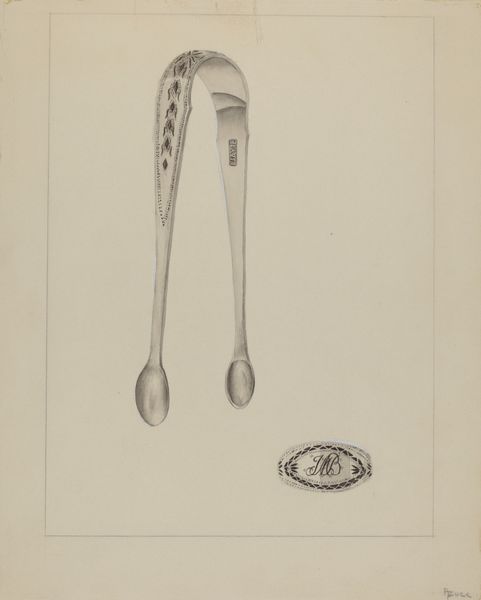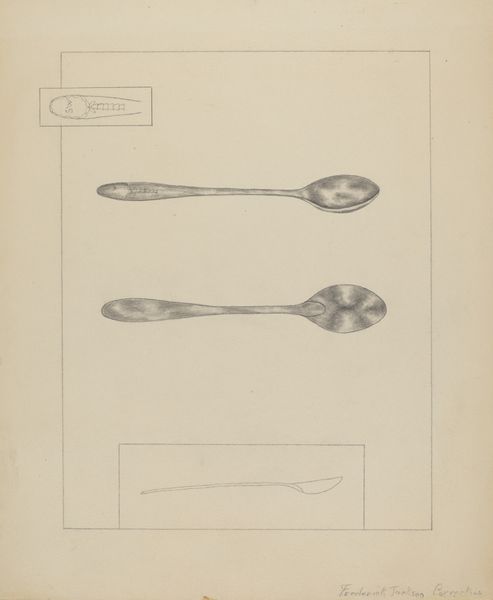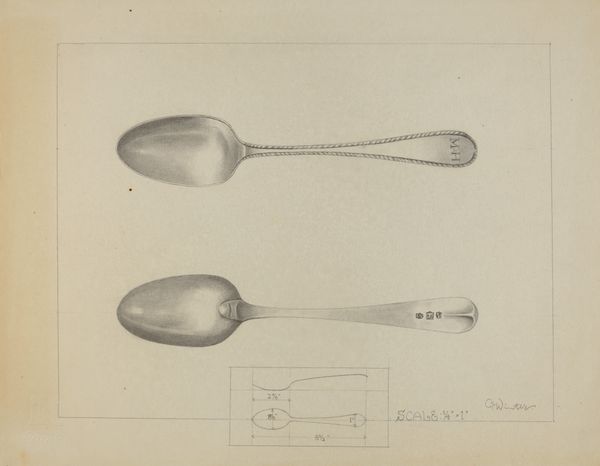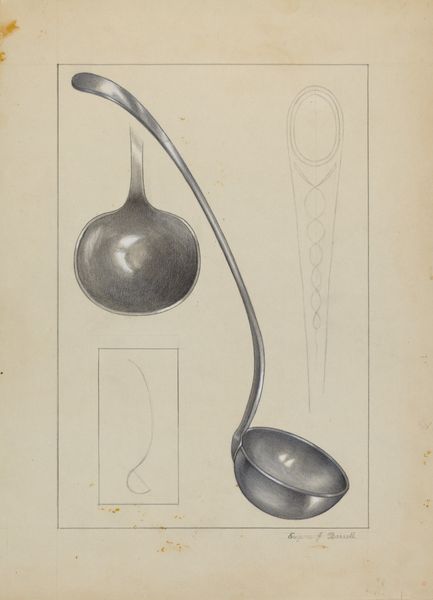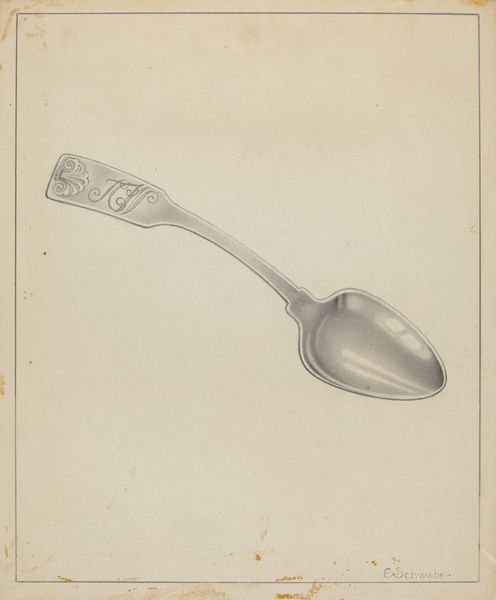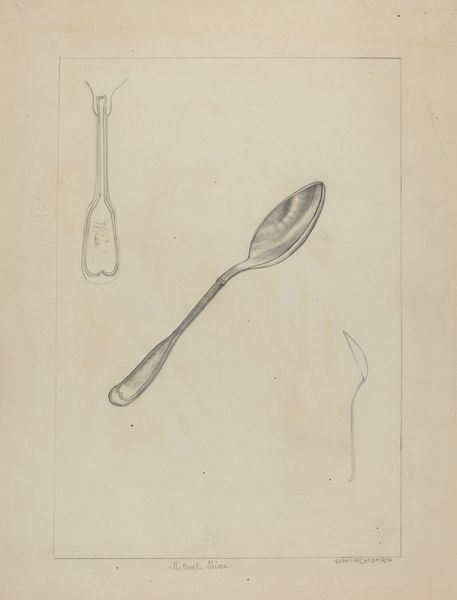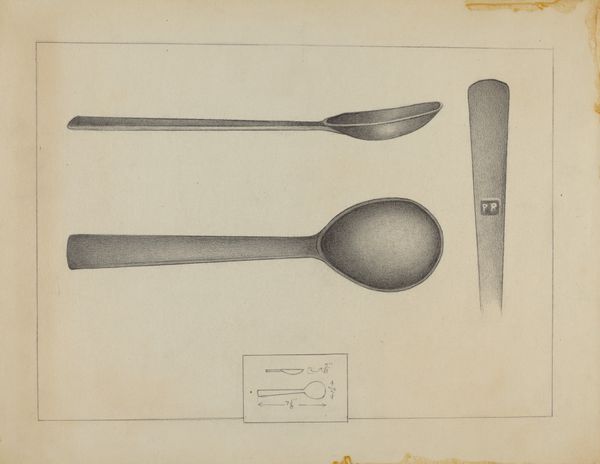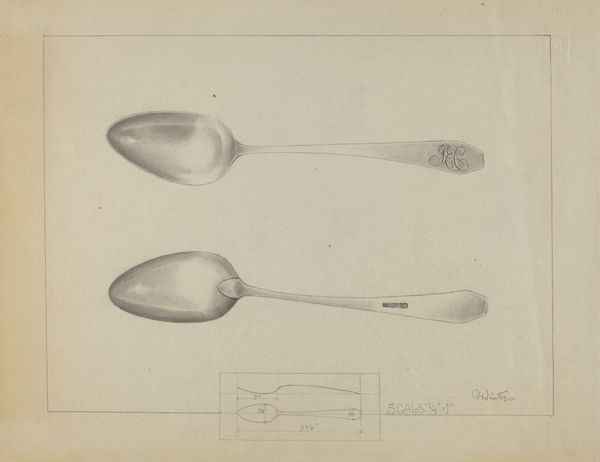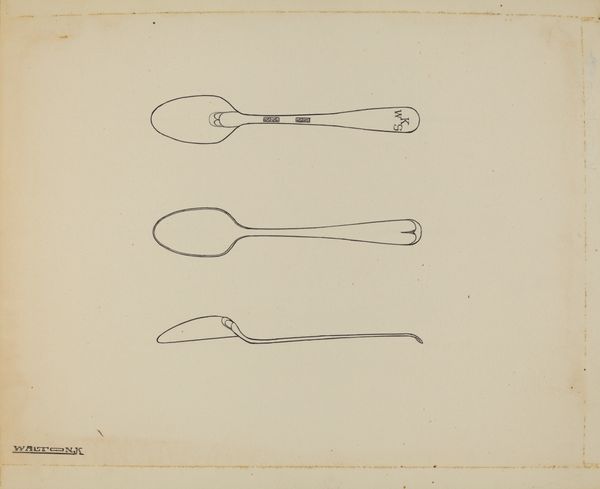
drawing, pencil
#
pencil drawn
#
drawing
#
geometric
#
pencil
#
realism
Dimensions: overall: 29.8 x 23.2 cm (11 3/4 x 9 1/8 in.) Original IAD Object: 13 3/4" long
Copyright: National Gallery of Art: CC0 1.0
Editor: This is Karl Joubert's "Silver Ladle," a pencil drawing from around 1936. There’s something elegant yet almost clinical about it, with these studies of form and light. How do you interpret this work? Curator: I see it as a lens through which we can examine the role of domesticity and labor in a rapidly changing world. This era, marked by economic hardship and social upheaval, often saw a renewed focus on the home, sometimes presented as a false ideal. The ladle, a tool of sustenance, becomes imbued with deeper meanings. Editor: That’s interesting! The eagle on the handle detail almost suggests heraldry, connecting the domestic with broader symbols of power. Curator: Precisely. And who is wielding that power? Who has access to silver, and who is preparing the meals? We need to consider how the romanticization of domestic labor often obscured the realities of inequality, gender roles, and the struggles faced by working-class women and men. What does it mean to enshrine the everyday object? Editor: I hadn't considered the socio-economic implications so directly. Curator: The artist is making deliberate choices about what to portray and how. The medium, pencil drawing, offers an accessible quality and makes it both modern and conservative at the same time. Even this image carries coded information. Consider also how the stark realism might function as a form of quiet resistance against idealised depictions. Editor: This has opened my eyes to the layered meanings in what seemed at first a straightforward study of an object. Thank you for your insight. Curator: And thank you. I hope we’ve prompted listeners to see everyday objects with new eyes and to question the narratives they represent.
Comments
No comments
Be the first to comment and join the conversation on the ultimate creative platform.
